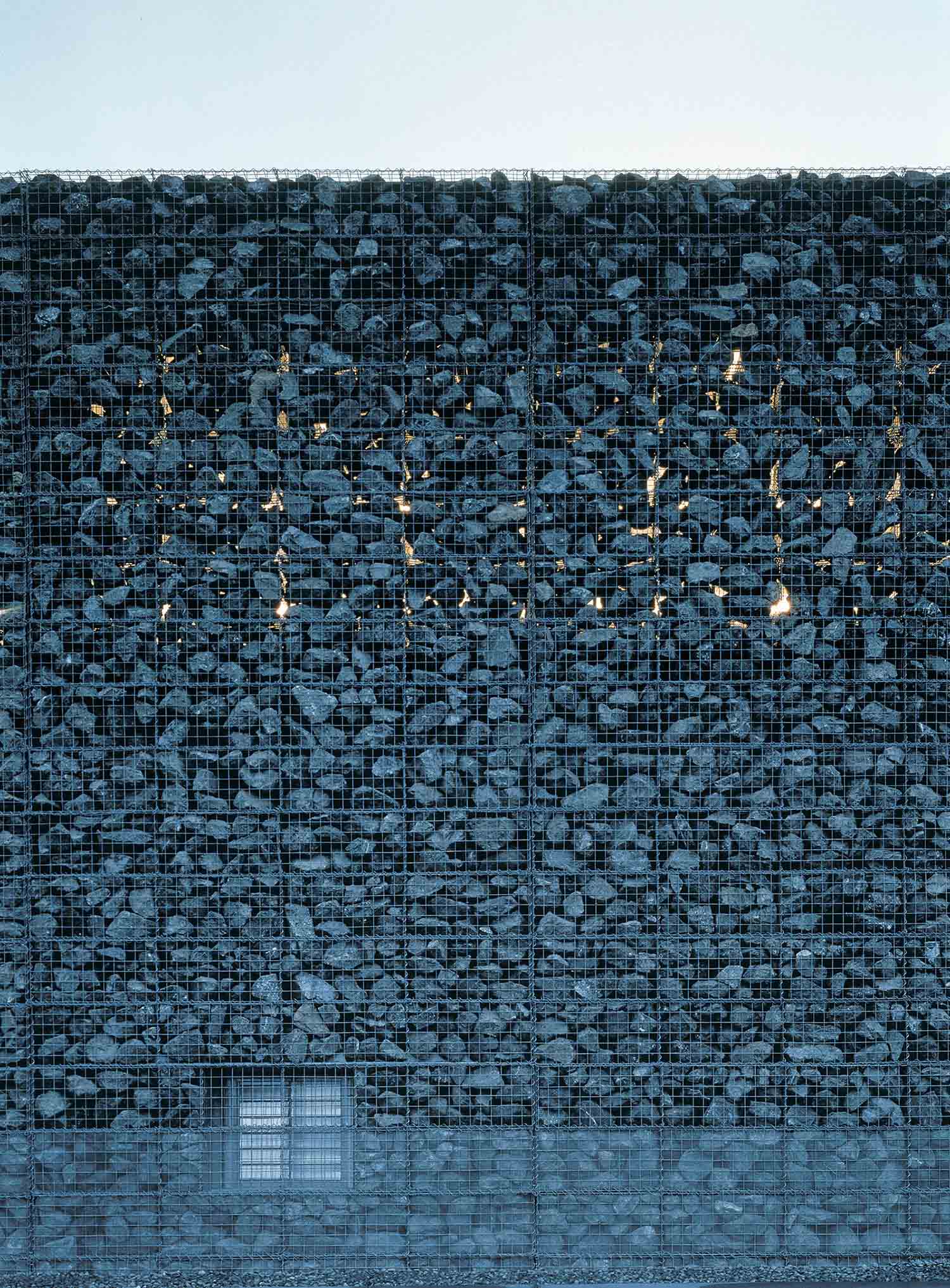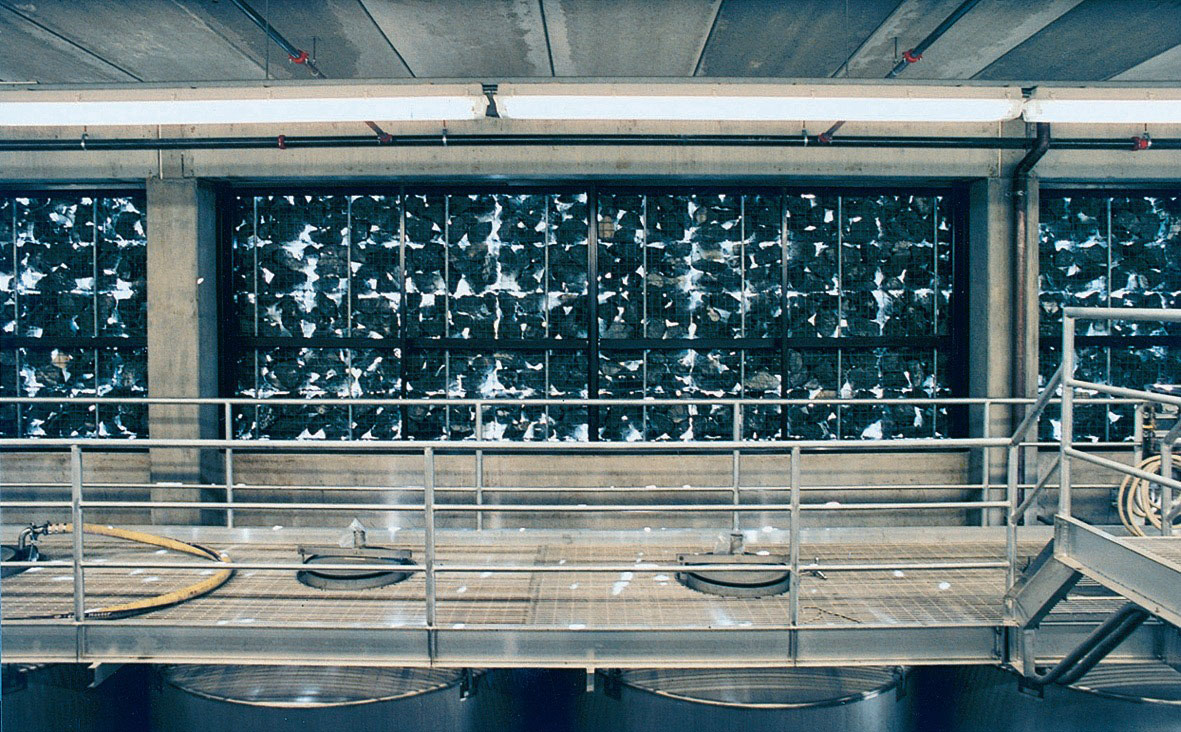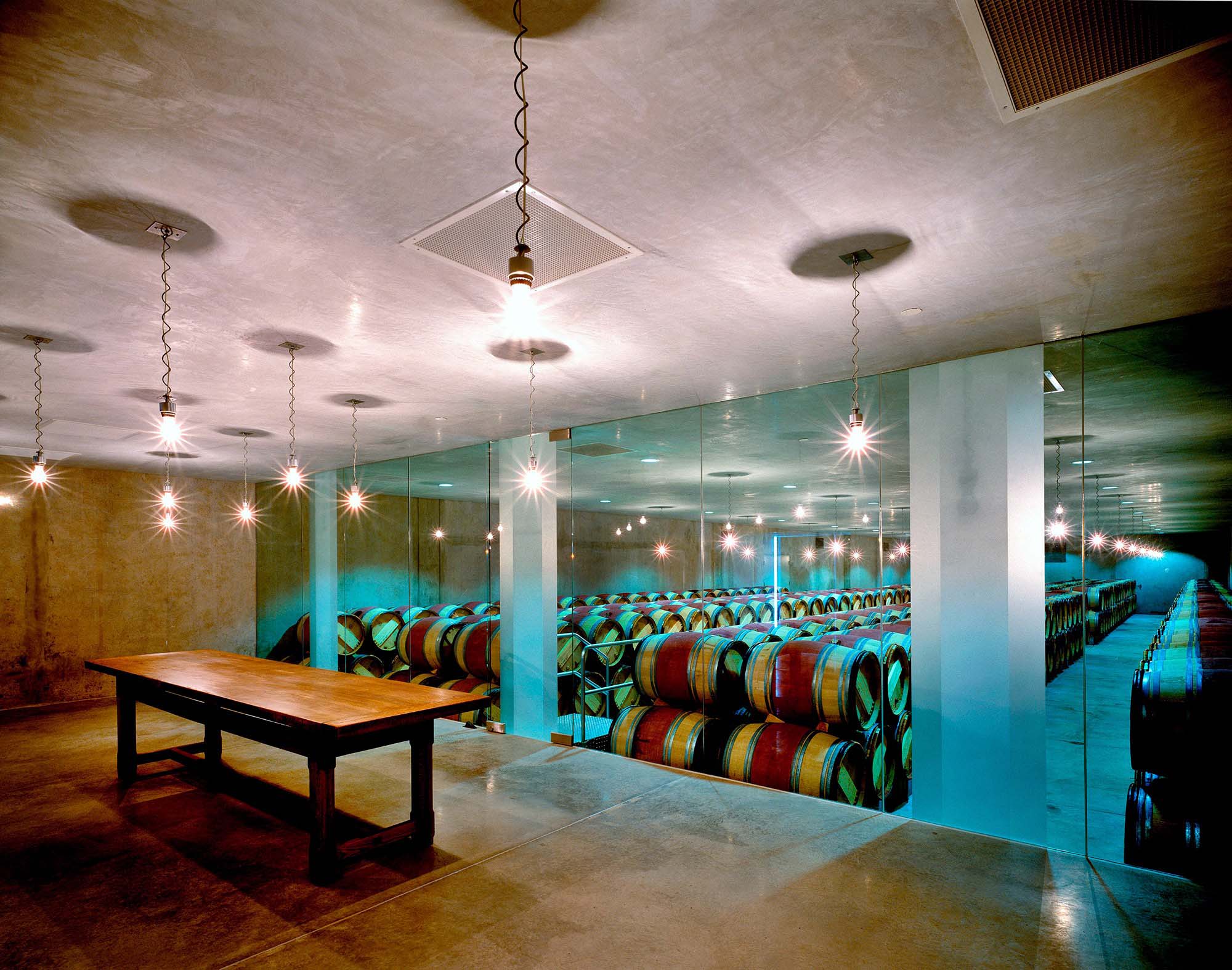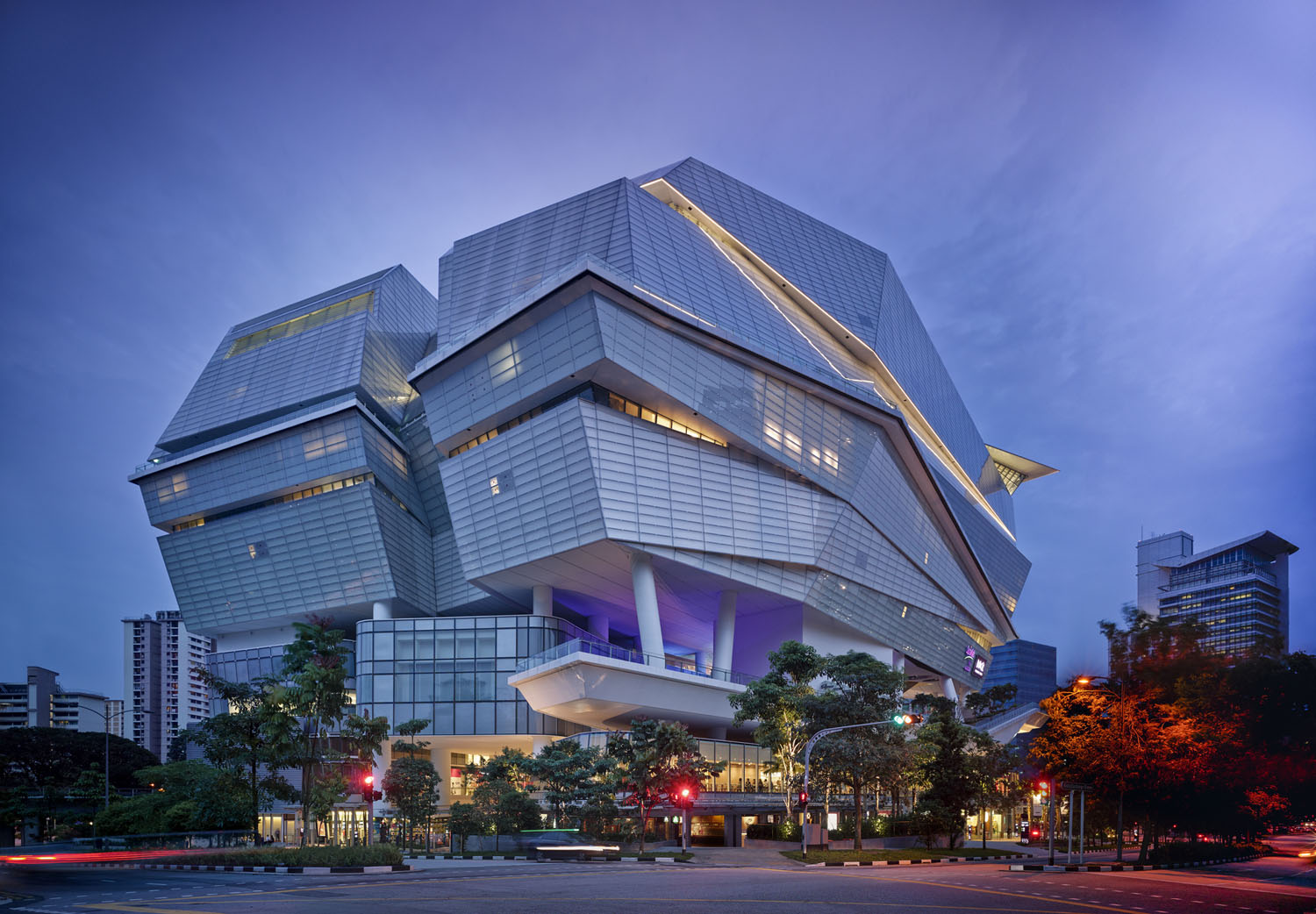













Project: Dominus Winery
Architects: Herzog & de Meuron
Location: Yountville, Napa Valley, California, USA
Area: 2,500 m2 | 26,910 Sq. Ft.
Project Year: 1995–1997
Photographs: Herzog & de Meuron, Margherita Spiluttini, Shinkenchiku Sha
Dominus Winery presents a fascinating intersection of history, terroir, and modern architectural vision in the rolling hills of Napa Valley, California. The site, rich in viticultural heritage, caught the attention of Christian Moueix, a renowned Bordeaux wine producer, who identified the vineyard’s potential to yield exceptional wines. This is unsurprising, given that wines of outstanding quality were already being produced at Napanook, the vineyard’s former name, in the mid-20th century.
"You could describe our use of the gabions as kind of stone wickerwork with varying degrees of transparency, more like skin than like traditional masonry."– Herzog & de Meuron Architects
Architectural Concept and Functional Organization
The site’s history reaches even further back, with the discovery of obsidian indicating that the vineyard was once the location of an ancient Native American settlement, imbuing the land with historical significance. After a decade of careful replanting, Christian Moueix recognized the land’s full potential and, in 1995, commissioned Herzog & de Meuron to design a winery that would reflect both the spirit of the terroir and the craft of winemaking. Known for their innovative yet contextually aware designs, the architects embraced the challenge of creating a structure that seamlessly integrates with the natural landscape while meeting the practical needs of modern winemaking.
Dominus Winery’s design is a lesson in elegant simplicity and functionality, rooted in the concept of blending architecture with its surroundings. Herzog & de Meuron opted for a long, linear form—100 meters in length, 25 meters in width, and 9 meters in height—that sits low against the horizon, disappearing into the geometry of the vineyard. The building bridges the main axis of the vineyard, connecting its functional units to the very land from which the wine is produced.
The winery is divided into three essential functions: the tank room, the Barrique cellar, and the storeroom. These units are separated by covered passageways, creating an efficient flow between each stage of production. The tank room, where fermentation begins, is a vast space filled with chrome tanks. Adjacent to it lies the Barrique cellar, where the wine matures in oak vats for two years before being bottled and stored. Finally, the storeroom, positioned at the southern end of the building, houses the wine cases until they are ready for sale.
The design reflects not only the winemaking process but also the visitor experience. The largest of the covered spaces acts as a public reception area, intersecting the main path of the vineyard. Guests are led through the degustation room, where a glass wall offers a panoramic view of the wooden vats in the cellar. From this vantage point, visitors are immersed in the winemaking process, with architecture serving as a conduit between the landscape, the product, and the visitor.
Dominus Winery Innovative Climate Strategy and Materiality
Napa Valley’s climate is characterized by dramatic temperature swings—hot during the day and cold at night. Instead of relying on conventional air conditioning systems, Herzog & de Meuron employed an innovative passive cooling strategy. The building’s most distinctive feature, the use of gabions, or wire cages filled with stones, serves as both a structural and thermal solution.
The gabions, filled with local basalt stones that range in color from dark green to black, were designed to act as thermal buffers, insulating the interior from extreme temperatures. During the day, the dense stone walls absorb and retain heat, while at night, they release it, maintaining a more stable internal environment. This strategy leverages the natural properties of the material, allowing the building to respond organically to its environment.
The density of the gabions varies across the façade, with some areas tightly packed for opacity and insulation, while others are loosely filled to allow light to penetrate. By day, the natural light filters through, creating a soft glow inside. At night, artificial light from within the building seeps out through the stones, making the winery appear as a luminous, stone-wrapped structure. This play of light and shadow not only enhances the aesthetic appeal but also reinforces the connection between the building and the natural rhythms of the vineyard.
Experimentation and Craft in Execution
Herzog & de Meuron’s approach to Dominus Winery was highly experimental. To ensure the success of their vision, the architects built two full-scale mock-ups during the design process—one in Basel and the other on-site in Yountville. These mock-ups were crucial in refining the gabion wall system, allowing the architects to test the varying levels of transparency and the technical feasibility of their chosen materials.
The gabions are more than just structural elements; they serve as a form of architectural “skin,” transforming the traditional notion of walls into something more tactile and permeable. This stone “wickerwork,” as Herzog & de Meuron describe it, plays with the relationship between solidity and transparency, creating an experience that shifts throughout the day as the light changes.
This experimentation in materiality and form elevates Dominus Winery from a functional industrial building to a crafted architectural piece that engages with its context on multiple levels. The use of local materials ties the building to its site, while the innovative climate strategy pushes the boundaries of sustainable design in a region known for its extremes.































